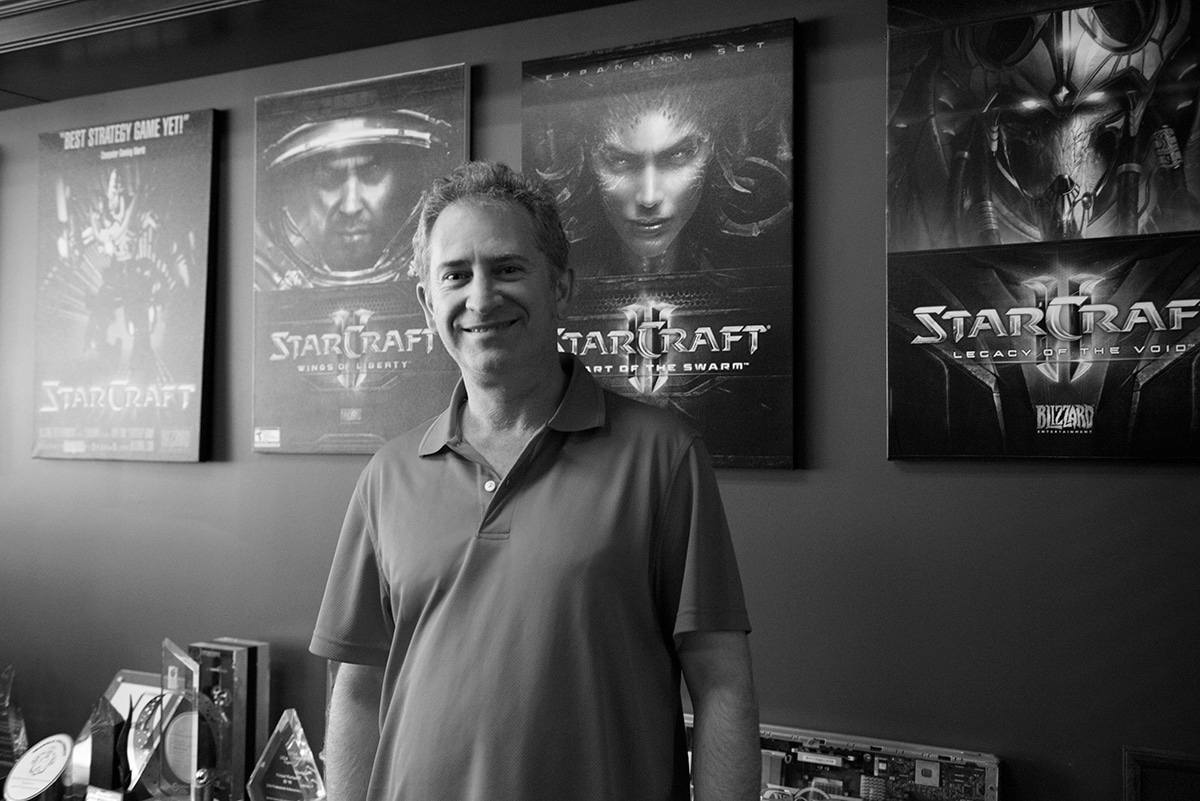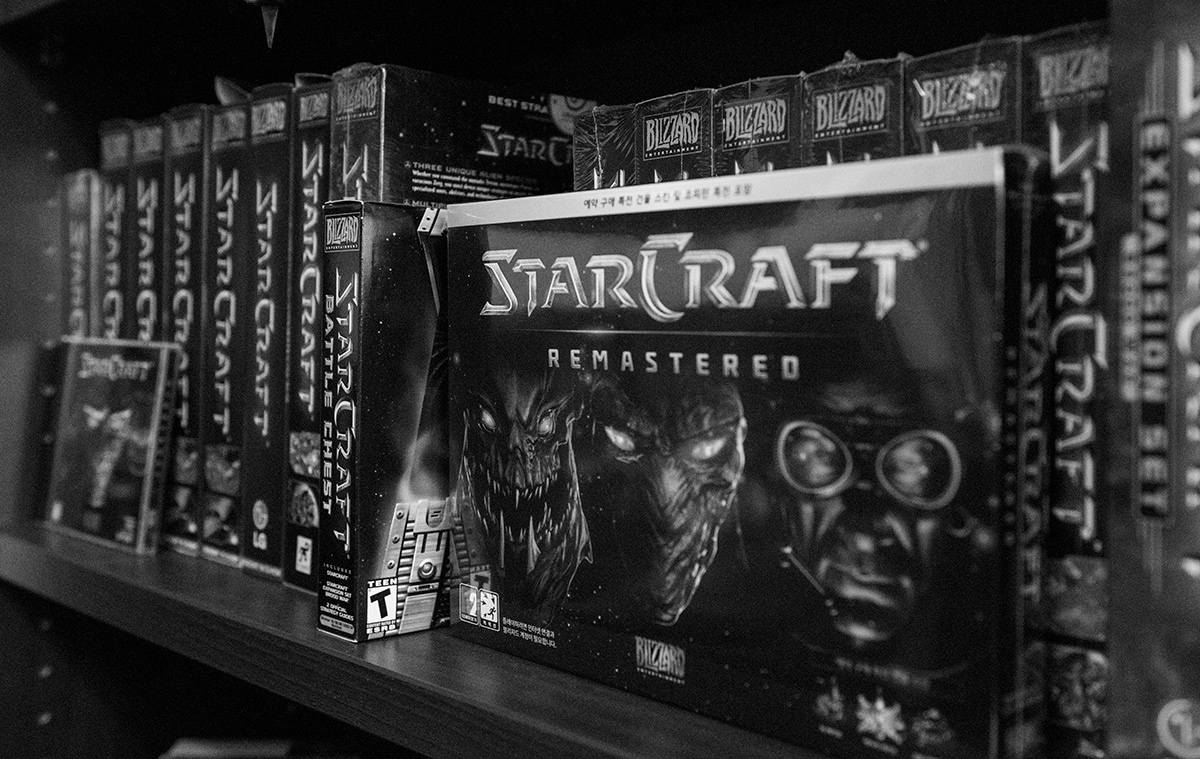Mike Morhaime on 20 Years of StarCraft Esports
Mike Morhaime, president and cofounder of Blizzard Entertainment, goes back to the beginning with StarCraft, and has had a hand in every expression of the sci-fi title since then. Beyond his involvement in creating the original game, Morhaime has been a fan of StarCraft esports since before esports was even a word. On the 20th anniversary of StarCraft, Morhaime took time to share some of his favorite memories on the growth of the game’s esports scene.
When StarCraft was released in 1998, Blizzard was already known for real-time strategy (RTS) games. Warcraft and Warcraft II: Tides of Darkness were two of the genre's top titles, so when it came time to make a new game, another RTS was the obvious choice.
“The artists were tired of drawing fantasy, so we thought we’d set this one in space,” said Morhaime. “The first pass was converting all of our tilesets. We used the Warcraft II engine and reskinned it, and we showed up at E3. People were pretty underwhelmed. There weren’t any mechanics yet. We had three months to put something together, and nobody was raving about our game yet.”
Back in 1996, the first alpha version of StarCraft was skewered by critics as “Warcraft in space.” Seeing the unenthusiastic response lit a fire under the nascent crew of Blizzard developers.

“There were a lot of RTSs in development at the time, and we felt like we needed to do much better," Morhaime said. "So Bob Fitch rewrote the engine, we modified the art, and really leveled up our ambitions for the game.”
When StarCraft launched in March of 1998, it received high praise and became the best-selling PC game of the year. But as Morhaime soon found out, that achievement unlocked a new horizon: people were playing the game on a serious, competitive level.
As Morhaime said, “There were companies that were doing tournaments, so we added support in Battle.net for pro players to have gamer tags. Then we started hearing that it was taking off in Korea and that there was a lot of competition going on. I hadn’t really seen anything like that until I took a trip out there. When we hit two million copies sold they held this big celebration, and this auditorium was completely packed. That was the first live esports event I ever went to.

“It was incredible. The crowd was really into it and they were cheering every time something happened. It was so much fun and there were so many people there. The fans were completely into it. It was amazing.
“The other thing that was surprising was that everyone there knew StarCraft. You could talk to people at the hotel or even people on the street, and StarCraft was a household thing. At the event, I gave a short little speech, and I introduced Bob Fitch as the lead programmer of StarCraft. He got a standing ovation.”
It was the birth of something special. Korea’s interest in StarCraft had exploded, and Morhaime had a front-row seat to the burgeoning esports scene in Seoul. For Blizzard as a whole, exploring new ways to support StarCraft esports fans, players, and casters begat more support for StarCraft as a franchise.
“Every time I visited Korea I got to see something live,” Morhaime said. “They’d have little mini-stadiums and stages where people could compete. There was an esports studio at the COEX [Mall]."
“I went to the opening of GSL [Global StarCraft II League]. After the opening, every time I came to GSL I would go and watch the games in their studio and just get a bunch of pizzas for everyone. I remember Artosis [caster Dan Stemkowski] would complain because there were no vegetarian pizzas, and he’s a vegetarian. I don’t eat pepperoni either, so I always made sure to get a vegetarian pizza for myself [and for] Artosis.”
StarCraft was a phenomenon and in Korea it had become a household name. But without the engaged and popular esports scene that Korea boasted, few in the West knew about the high-level play that professionals were exhibiting there. If only there were an event that Western audiences could get behind to experience the thrill of esports. Enter the BlizzCon, in 2005.

“Although BlizzCon grew out of the desire to have a World of Warcraft fan meetup, we decided to make it into a festival celebrating all of our games,” Morhaime said. “At the time StarCraft and Warcraft III esports were both pretty big, so we did invitational tournaments for each of those games. Esports wasn’t really a mainstream thing in the U.S. yet, so I think this was really exposing people to esports more than anything. People loved it."
“There was a year [2011] we had the GSL Finals at BlizzCon," he recalled. "I think it was MMA vs Mvp, and MMA won. The hall was completely packed. There were people sitting on the floor because we ran out of seats. They had some technical difficulties with soundproofing the player booths or something, so it went very late into the evening on Friday night. And it was just awesome because everyone stayed. They had to fill time, so they showed a documentary about Tasteless living in Korea. So we just waited, and the games were awesome and epic, the crowd was awesome, and it was this really great moment because StarCraft II was still pretty young.”
StarCraft II, which launched in July 2010, had a lot to live up to. With such a huge scene of ravenous fans, big expectations fell on a second installment to the popular franchise and the development team was committed to making a game worthy of the name StarCraft. After being developed under the codename Medusa, Blizzard announced the highly anticipated sequel to a gargantuan crowd in Seoul.
“In 2007, we rented out the Olympic Park and had a Worldwide Invitational event, which was mostly themed around StarCraft. We had some Korean K-pop bands come and play, like Super Junior, Ivy, and Psy was our headliner. When we played the StarCraft II cinematic and made the announcement, that was huge.”
Looking back on the long and rich history of the franchise, Morhaime shares his unique perspective as a fan—albeit one with some influence—on StarCraft’s place in the esports pantheon.
“I think with StarCraft II we were a little bit late, coming 12 years after the original,” he said. “If we were a little earlier, it would’ve been better for the game. But I think [it] has a permanent place in the history of esports because StarCraft II, at least in the very early years of Twitch, was the game of choice, and a key reason they decided to start the company in the first place."
With his hands-on development years behind him and his duties as president of Blizzard front and center, Morhaime still follows the game’s esports scene as an informed fan. He attends live events, holds occasional viewing parties at home, and keeps up with the best of the best as they display their skills on a global stage.
“I think esports is like regular sports or a live concert," Morhaime said. "It’s qualitatively different when you’re there with other people sharing the experience with the crowd. Even when you’re watching online, it’s important to hear the cheers of the crowd to make it feel more real.”
Bringing that level of connection to fans is one of StarCraft’s main contributions to the conversation around gaming over the past 20 years. Like millions of others around the world, Mike Morhaime, the StarCraft esports fan, is ready to see what the next two decades of StarCraft will bring.
Photo Credit: Margaret Lee